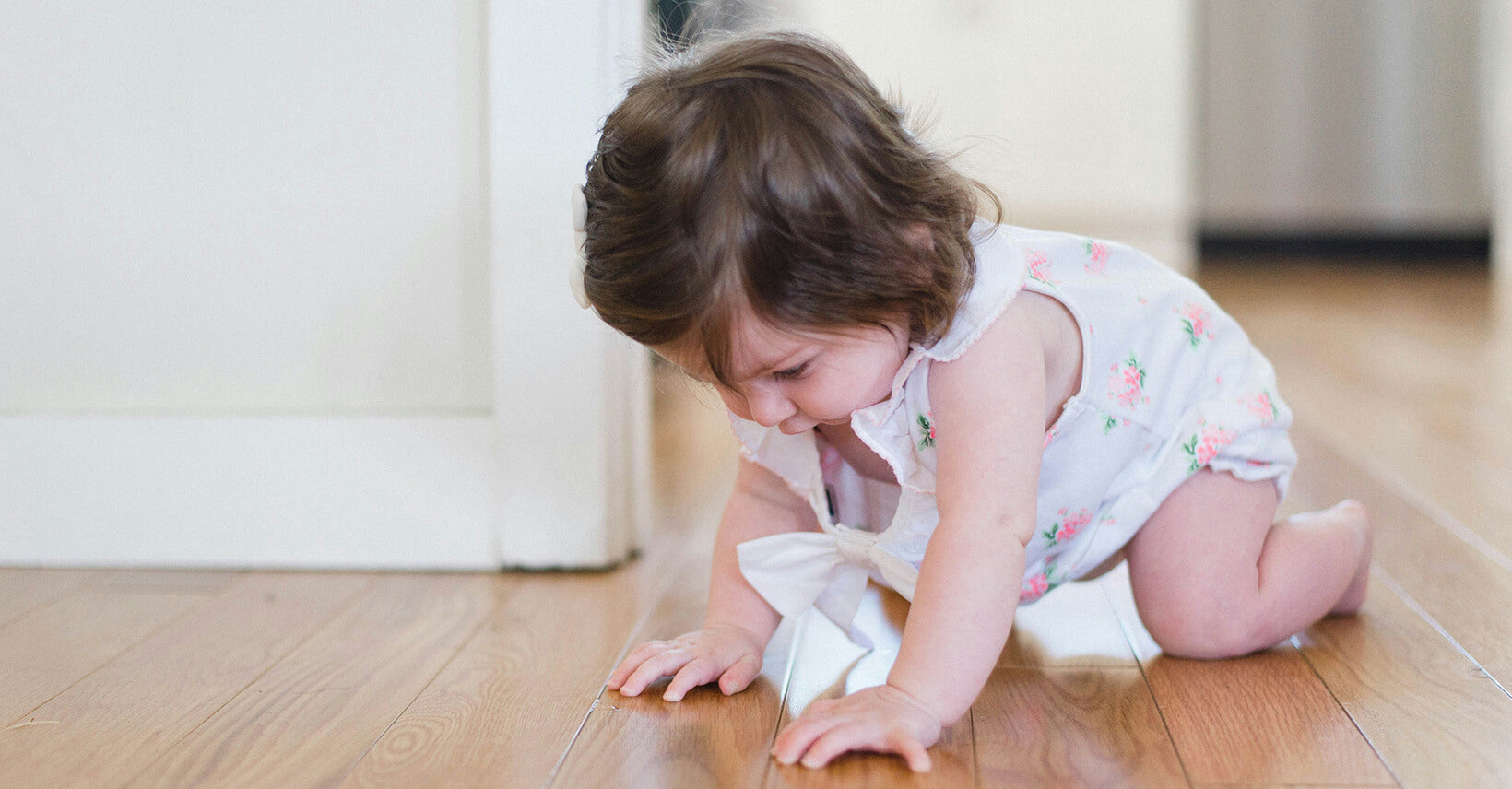


Have you ever thought about when babies start crawling? It's a milestone that many parents look forward to, but it can be very different for each little one. Today we're going to explore all things related to baby crawling to help new parents better understand this stage of their baby's life.
The time at which age babies crawl varies from baby to baby. Typically, babies begin to show signs of crawling when they are 6 to 12 months old. Some babies may be a little earlier, while others may later. Every baby is different, so don't worry if your baby isn't crawling like other babies their age.
Parents should know if their baby is ready to crawl before they try to help their babies to crawl. Here are some signs that a baby is ready to crawl:
As babies grow, their muscles strengthen, especially in the neck, arms, and core. Parents may notice that babies raise their heads higher during tummy time and sometimes can push themselves up on their hands and knees.
Before crawling, infants usually begin to rock back and forth on their hands and knees, which helps them build the coordination and balance they need to move forward.
Babies who are ready to crawl usually lie on their stomachs and push up with both arms, which helps them develop the upper body strength needed to crawl.
Tummy time is critical for infants to develop the muscles needed for crawling. Babies who are ready to crawl may be eager to participate in tummy time, lifting their heads and shoulders off the floor and looking around.
Some babies may skip the traditional crawling and opt for scooting. Scooting means the baby pulls himself forward with his arms while crawling and dragging his legs behind.
Babies who are ready to crawl usually have more interest in their surroundings. They may reach for things out of reach while lying on their back, or crawl to explore different directions.
The above signs may appear alone or at the same time, signaling that your baby is getting ready to crawl.
Here are some techniques to help your baby learn to crawl:
Tummy time is essential for building the baby’s muscles needed for crawling. Allow your baby to lie on their tummy during wake time, starting with a few minutes and gradually increasing the time as they become more comfortable. Parents also can use some brightly colored toys to attract and keep the baby focused during tummy time.
Make sure your home is a safe space for your baby to crawl. Remove any hazards or small objects that could cause a choking hazard and use safety gates to block off restricted areas. Encourage your baby to crawl by providing a clear, open, and safe space where he can move freely.
Place toys or objects out of your baby's reach to motivate them to move and crawl. To be able to grab these things, babies will try to crawl toward the target.
You can gently guide your baby's crawls during tummy time to help them understand what is crawl. Learn to gently encourage babies and avoid forcing them to crawl as they will naturally move at their own pace.
Use soft, supportive surfaces, such as play mats, to provide a comfortable space for your baby to practice crawling. Avoid rough or uneven surfaces that may cause discomfort or even danger.
There are generally three main types of baby crawling:
This is a common type of baby’ crawling. Babies move forward on their hands and knees, with the stomach off the surface. Babies push off with their hands and knees to push themselves forward.

Some babies skip traditional crawling and choose to scoot instead. In this type of crawling, babies use their arms to pull themselves forward while lying on their tummy and, at the same time drag their legs behind them.
In crab crawling, babies push themselves forward with their arms instead of pulling, which sometimes causes them to move backward or sideways, just as a crab moves.
Safety during crawling is critical for infants. Parents should make sure that the crawling area is free of hazards.
By creating a safe environment and closely monitoring your baby's movements, parents can help the baby have a safe crawling.
How does crawling affect your baby's sleep? There can be both positive and negative impacts.
On the positive side, crawling can help tire out your baby, and may lead to better sleep at night. However, some babies may become more active and excited about their crawl, which could make it harder for them to settle down and fall asleep.
Parents need to establish a consistent bedtime routine, get their baby a sleep sack, and create a safe sleep environment to help their babies adjust to any changes in their sleep patterns due to crawling.
In conclusion, the time at which infants begin to crawl varies from baby to baby and is usually between 6 and 12 months of age. Each infant develops at his or her own pace and parents should not be overly concerned. All parents need to do is to be aware of the signs that their baby is ready to crawl and help create a safe crawling environment that supports crawling.

Lily Hou
An expert in sleep sack design, is a valued contributor to Kaiya Baby's blog. With a strong background in baby sleep bags and maternal care, she is highly regarded for her professionalism. Lily prioritizes baby comfort and safety in her designs, using high-quality materials. Her insightful articles on sleep bags have been featured in reputable publications and have gained a significant readership. Trust Lily to help you create a comfortable and safe sleep environment for your baby, backed by her proven track record in the industry.
Leave a comment
This site is protected by hCaptcha and the hCaptcha Privacy Policy and Terms of Service apply.